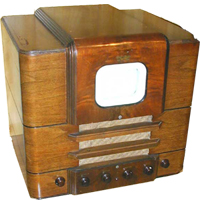

Over the centuries, humans have developed different ways of communicating with one another, and have especially sought ways of communicating a single message to large groups, via a mass medium. Various scientific and technological developments have led to the creation of mass media forms.

In Germany, around 1440, the goldsmith Johannes Gutenberg started work on printing press prototypes, experimenting with mechanical movable type. His invention is considered the most important event in modern history. Without the printing press, we wouldn't have had the Renaissance or the Scientific Revolution, there would have been no education for the masses (and, therefore, no democracy) and we wouldn't have today's knowledge-based economy. The technology spread round Europe very quickly, and pretty soon the average Renaissance press could churn out 3600 pages a day, and hundreds of thousands of copies of books were being sold and circulated, on every topic imaginable.
The next technological innovations that led to new media forms occurred in the nineteenth century. Parisians Joseph Niepce and Louis Daguerre presented the earliest examples of a photograph (images captured on plates of metal) to the world in 1839. Thomas Edison created the phonograph in 1878, that allowed the recording of sound for later playback. Then, various people lay claim to the technologies that came together to create movies. In 1895 the Lumière Brothers presented the first cinematograph show, a combination of the already-popular Kinetoscope and Magic Lantern.

The twentieth century brought inventions that made it possible to communicate a single message to a large audience simultaneously: broadcast. The first radio transmission was sent by the Italian, Marconi, in 1895, and he also sent the first transatlantic radio signal in 1901. Early radio transmissions were restricted to Morse Code (the first letter transmitted in both cases was 'S', •••), but transformed shipping. The Titanic broadcast its MAYDAY signals as it sank in 1912. After World War I, the first mass broadcast occurred in Holland (although enthusiasts in the UK tuned in) in 1919. Once mass radio broadcasts became a staple of communication, the race was on to bring pictures to the airwaves. Again, a lot of inventors had ideas for the broadcast of pictures along with sound, and it's impossible to say exactly who invented television as we know it and when. Both John Logie Baird (from Scotland) and Philo Farnsworth (from the USA) lay claim to that distinction for their work on broadcast systems in the 1920s.
By the 1990s it might have seemed like mass media was ubiquitous. Far from one mass medium taking over from older technologies, all media forms co-existed side-by-side. Despite fears, cinema didn't render photography obsolete, television didn't obliterate radio audiences, and books were still as popular as ever. Then along came the internet. Universities and major research facilities started networking their computer systems in the late 1960s and early 1970s, but the protocols for a global network (what we now know as the internet) weren't put in place until 1982, and it wasn't expanded for popular (e.g. non-research or military) use until the 1990s. As with the printing press, five hundred years previously, the technology spread like wildfire, and soon a personal computer became as much of a fixture in the home as the TV set.
Some theories suggest that we might include 'Mobile' as a new media form; media that is accessed via a smart phone or a tablet computer. This medium is simultaneously a mass medium and a personal one, and is completely changing the way we find, download and use information. It is also more interactive than previous media.
Read more about different media using the menu at the top left, or see more detailed accounts of media histories on these pages: